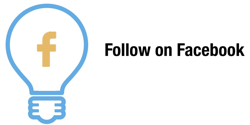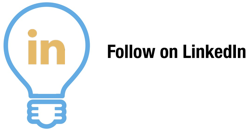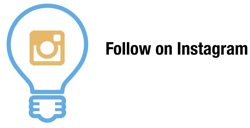With the release of a major algorithm update, SEO professionals around the world are scrambling to determine what the impact has been on their websites. So, here’s a question for you: when you hear news like this, a major algorithm change, what’s your battle plan?
Do you have one?
If you don’t, chances are a major algorithm change could cause you some serious stress down the road. So, what does a plan look like? I’ll share mine, which is a very simple, straightforward recipe:
- Log into Google Analytics for sites I’m responsible for (clients, company, self).
- Check organic search traffic for the past 7 days, compare to the previous 7 days, and compare year over year.
- If a decline, identify the affected pages by search volume per page lost, then look at what might be in common.
- Hit the forums and blogs – Search Engine Journal, Search Engine Roundtable, Black Hat World, AHREFs, Search Engine Watch – and see what the community consensus is about the changes.
- If a decline of a substantial amount (20% or more), look at search terms which have declined or vanished.
- Run ads against those terms to provide gap insurance until the algorithm settles down.
- If a severe decline (50% or more) and the site earns more than 50% of its traffic from organic search, activate the emergency response plan, which is launch additional campaigns on other channels. Example: plan to get an extra email out to the respective list within 3 days to shore up traffic loss.
- Watch traffic for the next 7 days on any site that has declined and continue remediation.
When we talk about planning, remember that plans don’t have to be elaborate, 75-slide PowerPoint decks. They can be a handful of bullet points like the one above that form your “quick reference handbook” of what to do when emotions might cloud your judgement or paralyze you into inaction.
Here’s a rule of thumb: for every channel in your marketing that results in more than 10% of your traffic, have an emergency plan like the one above for major, obvious contingencies (like algorithm changes) and once a quarter, make sure you practice it, just like any drill. You don’t necessarily have to spend money or ship the emails, but go through the exercise so that you’re familiar with any major changes in tools you use infrequently.

This week’s Bright Idea is our Agorapulse Summit talk, How To Build an Entire Year’s Content Marketing Calendar with Predictive Analytics. No longer available to the general public, this session walks through predictive analytics and how you can use it to forecast what your audience will be most interested in – and when. Watch the talk now for free!

This week’s Rear View Mirror Data looks at the first couple weeks of 2020 for brands on Facebook. How’s it looking out there? Let’s take a look:

Engagement rates across the various deciles (10% brackets) range from 0.046% to a paltry 0.0035%, with an overall average of 0.0215%, the historical average at the end of 2019. For context, for the largest brands, 1 out of every 28,571 fans engaged with any content. 28,571 people is the equivalent of standing in Times Square in New York City for 90 minutes. If you could have a conversation or hand out a brochure to 2 people in that time, you’d beat the engagement rates for the largest brands on Facebook.
Our strategic guidance for 2020 hasn’t changed when it comes to Facebook for brands, at least in terms of unpaid content: get as many of your fans and followers off Facebook to a different channel you own, like a Slack group or even better, an email list.
Methodology Disclosure: Trust Insights used Facebook’s Crowdtangle software to extract 375,330 posts from 2,316 brand pages for calendar year-to-date 2020. A list of brand accounts was provided by Crowdtangle and then scored based on use of singular versus plural pronouns to classify whether an account was likely a person or a brand. Posts that were sponsored/paid were excluded at time of processing. Posts were deduplicated by post URL prior to tabulation. Engagement is defined as (reactions + comments + shares) / page Likes at posting. Due to the changing nature of audience sizes, determining follower size for individual brands was calculated as the median number of followers for the page during the study period. The timeframe of the study is January 1, 2020 to January 15, 2020. The date of extraction is January 15, 2020. Trust Insights is the sole sponsor of the study and neither gave nor received compensation for data used, beyond applicable service fees to software vendors.

- {PODCAST} In-Ear Insights: Data Analytics, Business Analytics, and Marketing Analytics
- What is an IBM Champion?
- Marketing Analytics, Data Science and Leadership via January 13, 2020 Week In Review
- Marketing Analytics Tip: The Fastest Way to See Your Digital Marketing Tech Stack
- Thank You For Registering For Building Content Calendars With Predictive Analytics!
- 2020 Data-Driven Marketing Trends Report

Shiny Objects is a roundup of the best content you and others have written and shared in the last week.
Social Media Marketing
- Flipboard woos Facebook-weary publishers with a new branded content program via Digiday
- 6 Ways Instagram Leverages AI and Big Data
- How to Rock TikTok Just Like the Cool Kids Do (and Even Do It Better) via Agorapulse
Media and Content
- A Simple-to-Do Content Audit With 6 Questions
- Your Prescription for Healthier Perceptions and Content Impact
- Human Centric Approach Is Key For Web Design: Mr. Kandarp Bhatt
Tools, Machine Learning, and AI
- The Difference between AI and ML Data Science 101
- The Secret to Accurate Machine Learning Models is Data Transformation via insideBIGDATA
- How AI will change our lives in the near future, Alex Liu
Analytics, Stats, and Data Science
- 11 Tips to Make Common Plots with Pandas via Python and R Tips
- You Ask, I Answer: Proving the ROI of Analytics and Data Science?
- 5 Tips for Passing The Google Analytics IQ (GAIQ) Exam via Seer Interactive
SEO, Google, and Paid Media
- 7 Alternative Search Engines (Tried & Tested)
- Open Graph Meta Tags: Everything You Need to Know
- Google is about to do something great for users and terrible for advertisers BGR
Business and Leadership
- 6 B2B Tech Trends From CES 2020 via Crenshaw Communications
- Do Private Equity Buyouts Get a Bad Rap? via Harvard Business School Working Knowledge
- Nudge Management: How Behavioural Science Can Increase Productivity via Institute for Public Relations
Join the Club
Are you a member of our free Slack group, Analytics for Marketers? Join 800 like-minded marketers who care about data and measuring their success. Membership is free – join today.
Upcoming Events
Where can you find us in person?
- Winbound, January 2020, Rennes, France
- Social Media Marketing World, March 2020, San Diego, CA
- MarTech West, April 2020, San Jose, CA
- ContentTech Summit, April 2020, San Diega, CA
- HELLO Conference, April 2020, New Jersey
- Women in Analytics, June 2020, Columbus, OH
- MAICON 2020, July 2020, Cleveland, OH
Going to a conference we should know about? Reach out!
Want some private training at your company? Ask us!
In Your Ears
Would you rather listen to our content? Follow the Trust Insights show, In-Ear Insights in the podcast listening software of your choice:
- In-Ear Insights on iTunes/Apple
- In-Ear Insights on Google Podcasts
- In-Ear Insights on all other podcasting software
Social follow buttons
Make sure you don’t miss a thing! Follow Trust Insights on the social channels of your choice:
Required FTC Disclosures
Events with links have purchased sponsorships in this newsletter and as a result, Trust Insights receives financial compensation for promoting them.
Trust Insights maintains business partnerships with companies including, but not limited to, IBM, Talkwalker, Zignal Labs, Agorapulse, and others. While links shared from partners are not explicit endorsements, nor do they directly financially benefit Trust Insights, a commercial relationship exists for which we may receive indirect financial benefit.
Conclusion
Thanks for subscribing and supporting us. Let us know if you want to see something different or have any feedback for us!












